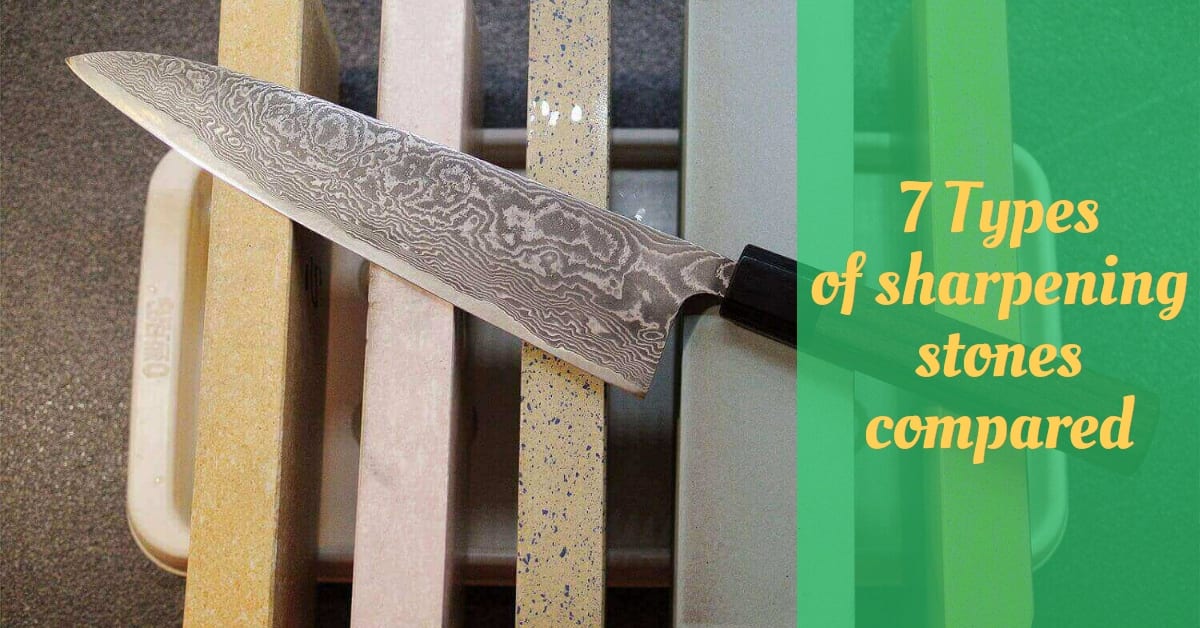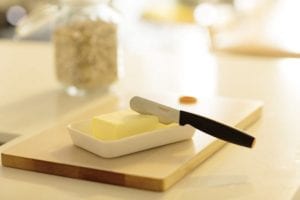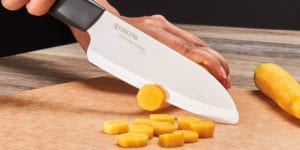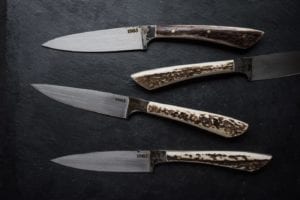Knives are one of the most important tools for people who often cook. Even if you’re not a professional chef and cook exceptionally simple meals for yourself, you’ll still need a knife.
Cooking tools have the tendency to dull, at the most unsuitable moment. In the range of shops with household appliances, you can easily find whole shelves with special devices for sharpening knives, blades, and scissors. But in addition to electric modern devices, there are also the most common sharpening stones, which are effective for sharpening knives and the other cutting tools.
By the way, you can check these reviews to choose the best knife for your kitchen:
It seems that there is only one material suitable for this. In fact, sharpening stones can vary in many ways. This can be a grit size – for example, 120 grit stones are only suitable for rough grinding and fine grinding stones from 1500 to 8000 grit are used to soften this method of sharpening.
The material from which the sharpening stone is made also plays a huge role. We offer you to look at their main types and to understand what they differ in.
1. Arkansas stones

Arkansas can be considered one of the most famous grinding stones derived from nature. It was named after the place where the main production takes place – the state of Arkansas in the United States of America.
These stones are a mixture of quartz and some rocks. Depending on the layer from which they were produced, it is possible to distinguish soft, medium and hard Arkansas sharpening stones. They can be considered coarse and sharpened abrasive.
Therefore, when using Arkansas sharpening stones, oil or other softening fluid is often used. All the uniqueness of Arkansas stones lies in their structure, which contains almost 99% quartz.
Due to the extremely limited inventory, the cost of Arkansas sharpening stones is quite high and does not always depend on the quality of the stone itself.
You may also like: 5 Best Japanese Cutting Boards
2. Aqueous sharpening stones
Water grinding stones are also known as “Japanese”. They belong to the category of natural sharpening stones and are almost universal for sharpening any kitchen knives. Japanese stones will allow you to work even with hard steel knives that require special attention – the cutting edge can be polished while sharpening.
The stones have minimal wear and tear, making them very durable even when sharpened intensively. Japanese grinding stones can also be distinguished by their grain size.
Professionals recommend starting grinding from the most abrasive stones and then to the finest grains. Sharpening itself is carried out using water, in which the stone is pre-sharpened. In terms of price-quality ratio, water grinders are an excellent option for permanent use at home.
3. Diamond sharpening stones

As you know, diamonds are the hardest minerals in the world. They can cut glass, but they are also used to produce sharpening stones. If you think that the whole stone will be a solid gemstone, then you are wrong.
The working layer of such sharpening stones is incredibly thin – this is due to the high cost of the material. At the same time, even a thin layer does not affect the service life – you can use the sharpening stone for more than 10 years.
Diamond stones do not require soaking in water, but this can simplify the sharpening process. Beginners will have a hard time getting used to the stone right away: if sharpened carelessly or quickly, diamond stones can easily damage the cutting edge of the knife, which will ruin it once and for all.
4. Ceramic sharpening stones

Ceramic stones are the most inexpensive and durable stones you can find at an affordable price. Ceramics are produced either as complete sharpening bars or simply by creating an abrasive surface.
Unfortunately, this is where the significant advantages of ceramic synthetic stones come to an end. Sharpening knives with these stones is a long and hard process that will take you a long time.
Sharpening tools is slow and complicated by the specific shape of ceramic stones. It will be hard enough to find fine stones, but if you find them, the finish grinding of the knife will be perfect. Most often they are not recommended as a basic tool for sharpening, but only to give the tool a final finish.
5. Emery sharpening stones
However, if you want to sharpen something more than a knife, we can tell you about industrial rocks. The emery sharpening stones are designed for electrical machines.
Although they can also be found in home use: small sharpening wheels are available which are suitable for sharpening non-hard metals. They are not so good for knives, but you can easily sharpen scissors with the emery stone.
The reason for quality tool sharpening is that the stone material itself is soft enough and does not reach high temperatures during the sharpening process. Depending on the material, you should select the right sharpening stone – for example, there are green emery stones for hard metals and white stones for home knives and scissors.
6. Synthetic water sharpening stones
These synthetic stones are manufactured from a mixture of carbides and silicon oxides with additions of chromium and aluminum. In its production, special attention is paid to the size of the particles – all of them must be exactly the same.
Particles of different sizes may negatively affect the knife itself if the stone is produced with different sizes when further sharpening is carried out. The hardness of synthetic water stones depends directly on the bonding material.
Basically 2 variants are used – ceramic binders and bakelite. If you use ceramics, the hardness of the stone will be quite high, and if the bakelite was used – it is low. As the name makes clear, you will need water during the sharpening process.
You will need to soak the stone before starting work for 5 to 15 minutes depending on its grit size. You can stop soaking as soon as air bubbles stop appearing on the stone’s surface.
7. Oil sharpening stones

Oil grinding stones are a type of ceramic stone. They have a longer service life as they are produced using admixtures of other binder materials. The main thing is that oil sharpening stones have a huge number of different shapes, which are designed for specific knives.
For example, you can now find special sharpening stones for special bread knives. With oil sharpening knives you can make the blade thinner in the final stage of sharpening or remove small defects that have remained from the more abrasive material.
Use oils, preferably mineral oils, when working. This will preserve the surface of the oil grinding stone and prolong the life of the blade.
The sharpening of kitchen knives and other household tools is an important thing to do. You can give your tools to special workshops or use sharpening machines that require little or no involvement from you.
But many professionals place their trust in sharpening stones, using them as their main tool when sharpening. The main thing to remember is that it is not always realistic to limit yourself to one type of sharpening stone. You may need to use several options to achieve a perfect sharpening result.
You can also check: 5 Best Bread Cutting Board



